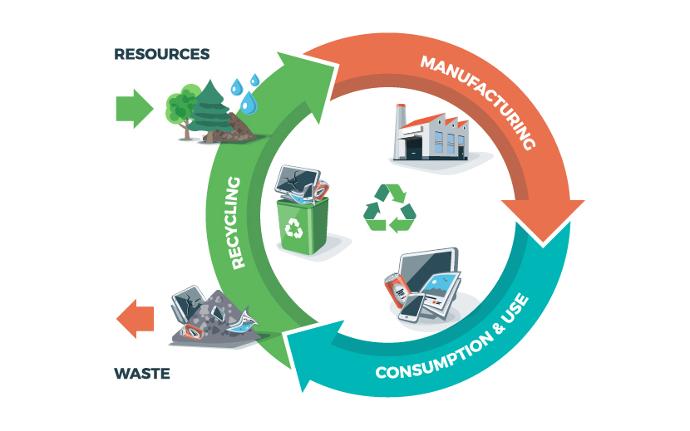"Plastics and the Circular Economy"
Below is an analysis of the article titled "Plastics and the Circular Economy"
For more information;

Exploring Plastics and the Circular Economy:
In recent years, the issue of plastic pollution has gained widespread attention, prompting global efforts to address its environmental impact. At the forefront of this movement is the concept of the circular economy, which seeks to eliminate waste and promote sustainable resource use. In this blog, we will take a deep dive into the relationship between plastics and the circular economy, as explored by the Ellen MacArthur Foundation.
Understanding the Circular Economy:
The circular economy represents a shift away from the traditional linear model of "take, make, dispose" towards a more sustainable approach. At its core lies the idea of keeping resources in use for as long as possible, extracting maximum value from them, and minimizing waste. This shift requires rethinking how products are designed, manufactured, and consumed.
Plastics in the Circular Economy:
Plastics play a significant role in the transition to a circular economy due to their ubiquity in modern society. However, the linear nature of current plastic production and consumption patterns poses significant challenges. The Ellen MacArthur Foundation's deep dive into plastics and the circular economy explores strategies to overcome these challenges and create a more sustainable future.
Key Insights from the Deep Dive:
Design for Circularity: One key strategy highlighted in the deep dive is designing plastic products with circularity in mind. This involves designing products that are durable, repairable, and recyclable, ensuring that materials can be kept in circulation for as long as possible.
Closed-Loop Systems: Another approach discussed is the implementation of closed-loop systems, where products are designed to be returned, refurbished, or remanufactured at the end of their life cycle. This helps minimize waste and maximize resource efficiency.
Innovative Recycling Technologies: The deep dive explores the importance of investing in innovative recycling technologies that can handle a wider range of plastics and produce high-quality recycled materials. Advanced recycling methods such as chemical recycling offer promising solutions for transforming plastic waste into valuable resources.
Collaboration and Policy Support: Collaboration between stakeholders across the value chain is identified as crucial for driving progress towards a circular economy for plastics. Additionally, supportive policies and regulations play a vital role in creating an enabling environment for circularity initiatives to thrive.
Looking Ahead:
As we navigate the complexities of plastic pollution and strive for a more sustainable future, the principles of the circular economy offer a guiding light. By embracing circularity in the design, production, and consumption of plastics, we can reduce waste, conserve resources, and mitigate environmental harm.
In
conclusion, the deep dive into plastics and the circular economy conducted by
the Ellen MacArthur Foundation sheds light on the challenges and opportunities
in transitioning towards a more sustainable plastic economy. By adopting
circular principles and fostering collaboration and innovation, we can pave the
way for a circular future where plastics are part of the solution rather than
the problem.
